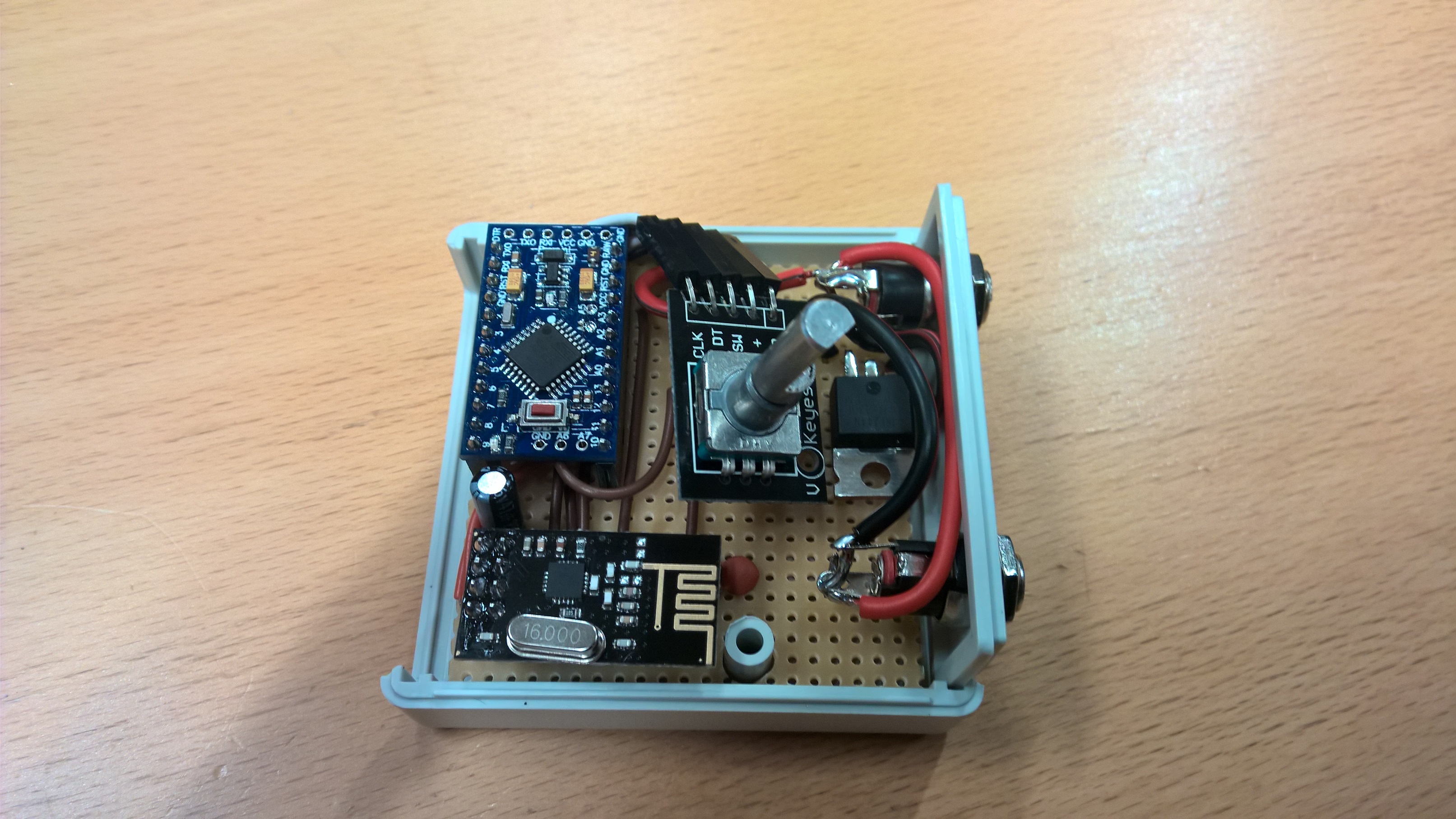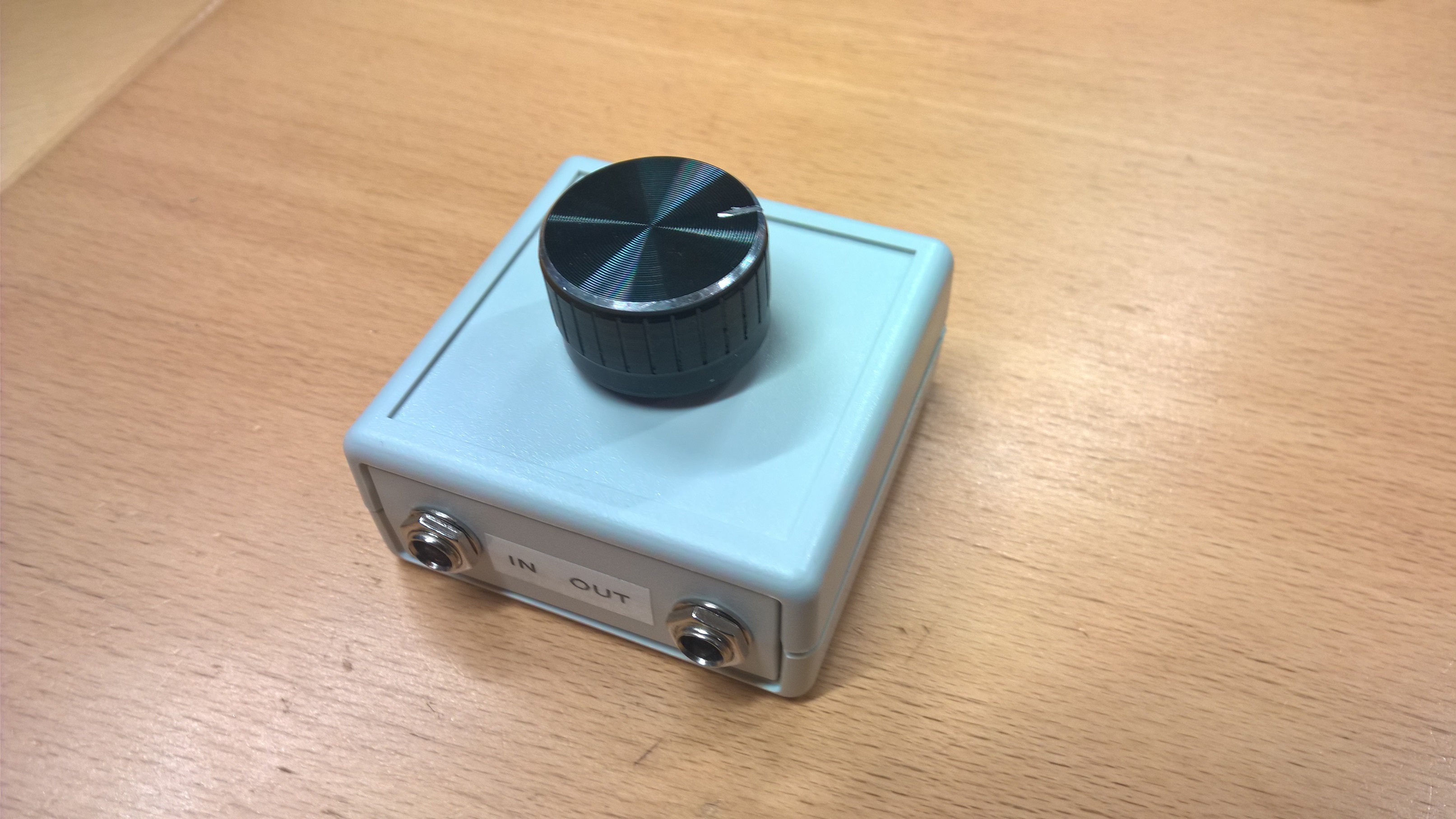💬 Dimmable LED Actuator
-
@pjblink I had the same problem in https://forum.mysensors.org/topic/2335/controlling-leds-with-the-irlz44n/ and another community member had something similar: https://forum.mysensors.org/topic/2335/controlling-leds-with-the-irlz44n/
The solution seems to be to buy new mosfets and hope that they work properly.
@mfalkvidd So keep trying IRLZ44N FETs?
-
@mfalkvidd So keep trying IRLZ44N FETs?
-
Inspirational pictures from my Dimmable LED Actuator with rotary encoder device I made for my sons bedside lamp.
Running this at 12VDC. His lamp had a G9 socket so I just broke apart the G9 LED bulb and soldered some G4 12VDC LED lights like these to it and replaces the "Dumb" switch with a 5mm DC plug. It turned out so nice that I think I will MySensor my own bedside lamp also.Edit: btw, I found the nice big knobs from here -> eBay


-
Bahh.. I had the 12VDC connected directly to the RAW pin on the Arduino Pro mini and yesterday it failed.
I should have known better. Now added a 5V regulator to the device and a new 5V Pro Mini. -
Hi all
I love the mysensors project. I have made a lot of sensors by now. Now I would like to control these LED-lights with a dimmer node:
http://www.siriushome.dk/product/50200/ (in danish)
The specs. for the LEDs are 6W@80V.
I have two questions that I hope you can help me with.
A) What is the easiest way to drive an arduinonode from 80v. Is a DC/DC converter the only way?
B) What mosfet would you suggest using for controling the LEDs?I hope you can help. Many thanks.
// MalmQ
-
Hi guys,
Struggling with this a little and think it may be hardware related. I'm using a 3.3v pro mini and it won't let the 12v LEDs go to full brightness, at max dim level they're still quite dim. I've tried this on both regular flexi LED strip and the copper-wire type LEDs (final project is based on these).
I've tried with a different FET, an IRLB8721 and that goes to full brightness however won't switch the LEDS off completely so guessing there's a leak from that FET! I'm not sure if that's normal or not. Frustrating.
Ideally i want the circuitry to be 3.3v as i'm already converting the 12v LED power supply down to 3.3v for the nRF. I'd rather not have a 5v and 3.3v regulator.
Thanks,
Patrick
@pjblink the irlzn44n is very sensitive to over heat during solder, I have lost some of them during soldering :) please be careful
-
Hi!
I'd like to use this sketch with a 5V Arduino Nano, do I need to use another type of MOSFET for this?
From the OP I gather that the IRLZ44N is used because of the lower gate threshold in combination with the 3.3v operating voltage, but won't the IRLZ44N gate be saturated very quickly when using 5v?Creaky
-
Hi!
I'd like to use this sketch with a 5V Arduino Nano, do I need to use another type of MOSFET for this?
From the OP I gather that the IRLZ44N is used because of the lower gate threshold in combination with the 3.3v operating voltage, but won't the IRLZ44N gate be saturated very quickly when using 5v?Creaky
-
@Creaky the dimmer uses PWM to control the light level, so the mosfet is always either in cutoff or fully saturated. So using IRLz44N with 5V will work just as well as 3.3V.
@mfalkvidd Thanks for the reply!
-
@Creaky the dimmer uses PWM to control the light level, so the mosfet is always either in cutoff or fully saturated. So using IRLz44N with 5V will work just as well as 3.3V.
@mfalkvidd Just so you know, there is no PWM involved in this sketch. I've just build this setup/node and it works great. You can see that the LED are continuously fed and brightness is changed by changing the voltage to the LEDs through the MOSFET.
-
@mfalkvidd Just so you know, there is no PWM involved in this sketch. I've just build this setup/node and it works great. You can see that the LED are continuously fed and brightness is changed by changing the voltage to the LEDs through the MOSFET.
-
It might be a very nice idea to use neopixels with this, a little expensive though when using a lot of LED's but still it's possible to dim them just by using code.. I am afraid I am not able to do that and it was just a small thought... :)
-
@mfalkvidd Yikes, you're right! I drew my conclusion too soon and only by watching the LED strip at max brightness. At max brightness the switching frequency is so high it is no longer perceptible by the eye. Mea culpa...
-
@mfalkvidd Yikes, you're right! I drew my conclusion too soon and only by watching the LED strip at max brightness. At max brightness the switching frequency is so high it is no longer perceptible by the eye. Mea culpa...
@Creaky yes the switching is pretty quick. I guess that's the whole idea :) I have noticed a refraction pattern in the kitchen sink when using a thin jet of water though.
The analogWrite function in Arduino is very poorly named, since it doesn't really write an analog value. But I guess it is hard to change now.
-
I plan to use a LED strip as a closet light, controlled by a magnetic door switch, and of course also controllable in Domoticz. What would be the right way to write the code, should the pro mini send the state of the magnetic switch to the controller and then let the controller turn on the light, or is it easier to let the pro mini turn on the light directly and then report the state back to the controller? Big difference in delay?
-
It's a closet with two sliding doors and therefore two magnetic switches, and I want the LED to turn on when opening one of the doors, but also be able to turn it off remotely if we forgot to close it when leaving our home.
-
I would like to use this with a 48 Watt led which uses a constant-current power supply 54 - 87 VDC 600 ma output. This mosfet isn't high enough voltage rating, the IRF630MFP is rated at 200V 9amp, however I have questions about if the uC output will power the gate. The gate-source voltage is +/- 20. The VGS(th) gate threshold voltage is 2 to 4 volts with typ 3V. I would cut the negative from the power supply and connect to source, then connect the Led negative to drain, and connect the drain to ground on the uC? I need a reality check- does this sound possible or will I fry something?
-
Hi,
I'm new in MySensors and build this Dimmer - LED with and without the rotary encoder which works fine.
Now I would like to decouple the rotary encoder as a battery powered "standalone" sensor which is (in best case) connected directly to the LED-Dimmer. Furthermore the decoupled rotary encoder should be always in sleep mode until the rotary encoder awake the arduino.
Is that possible ? I'm just stuck to seperate the code for the rotary encoder from the led-dimmer code.
Thank you in advance. -
hi, i used the example sketch. i also changed from "delay" to "wait" in fade section. The problem: i can change the percentage for example 8 times and then the gateway crashes and reboots. In a other case it works 12 times and then the gateway crashes. All other nodes (Temp, Hum) works fine all the time.
